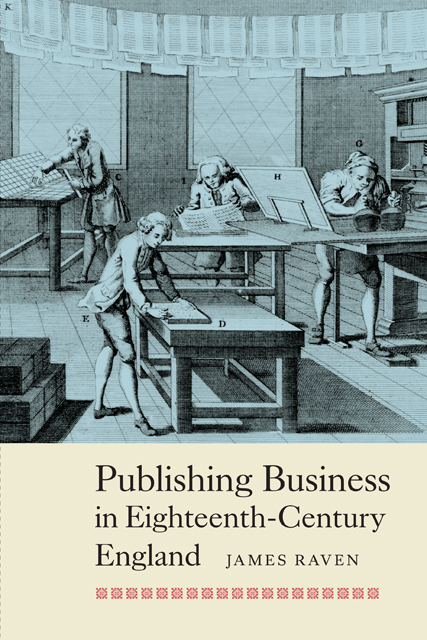Book contents
- Frontmatter
- Dedication
- Contents
- Acknowledgements
- Notes on Dates, Booksellers, Founts and Intaglio
- List of Abbreviations
- 1 The Mediation of the Press
- 2 England and the Uneven Economic Miracle
- 3 The Printed and the Printers
- 4 Serviced by Stationery and Printing
- 5 Printing and the City of London
- 6 Advertising
- 7 The Advertisers
- 8 Intelligence
- 9 Instruction and Guidance
- 10 Wider Discussion
- 11 Business, Publishing and the Gentleman Reader
- Conclusion
- Bibliography of Printed Sources
- Index
2 - England and the Uneven Economic Miracle
Published online by Cambridge University Press: 28 February 2023
- Frontmatter
- Dedication
- Contents
- Acknowledgements
- Notes on Dates, Booksellers, Founts and Intaglio
- List of Abbreviations
- 1 The Mediation of the Press
- 2 England and the Uneven Economic Miracle
- 3 The Printed and the Printers
- 4 Serviced by Stationery and Printing
- 5 Printing and the City of London
- 6 Advertising
- 7 The Advertisers
- 8 Intelligence
- 9 Instruction and Guidance
- 10 Wider Discussion
- 11 Business, Publishing and the Gentleman Reader
- Conclusion
- Bibliography of Printed Sources
- Index
Summary
Printers’ products and services contributed to an economic transformation of startling range and complexity. The ‘English miracle’ was part of broader British developments, coaxed by changing political frameworks across the three kingdoms and by expansion overseas. At the close of the seventeenth century, England exported goods to the value of £6.5 million per year and imported goods worth about £6 million. By 1816, English, Scottish and Irish exports were worth £39 million in official (constant price) values; imports were worth £33.6 million. An English and Welsh national income of about £48 million in 1688 compares to a combined English, Welsh and Scottish national income of £232 million on the eve of Irish union in 1801. By 1815, textiles, comprising almost four-fifths of total exports, were as dominant a proportion of exports as they had been in 1695, but cotton, not wool, was now king. As a result of colonial consolidation, particularly in the West Indies, the re-export of tobacco, sugar and other overseas produce comprised about a third of all exports from the 1690s until the early 1770s. By then re-exports roughly equalled the value of all domestic exports to Europe.
With the Navigation Acts ensuring that colonial primary produce was sent directly to the home country and not to other European markets, a quarter or more of all imports to England and Scotland were re-exported in the years prior to 1775. The value of the entrepot trade was halved during the American revolutionary wars, but British naval supremacy ensured an impressive re-export recovery during the European wars after 1793. Between 1814 and 1816 just over a quarter of all goods sent out from English ports were re-exports. Industrial production was based on textiles (predominantly wool and later, cotton), the manufacturing industries of shipbuilding, construction, metal smelting and refining, and a variety of derivative finishing trades. In 1700, Sir Ambrose Crowley’s Sunderland iron factory was the largest in Europe, nine years before Abraham Darby established his famous works in Coalbrookdale. In the same decade an average of 16,000 tons of iron were imported and 1,600 tons of iron and steel were exported each year.
- Type
- Chapter
- Information
- Publishing Business in Eighteenth-Century England , pp. 17 - 32Publisher: Boydell & BrewerPrint publication year: 2014

